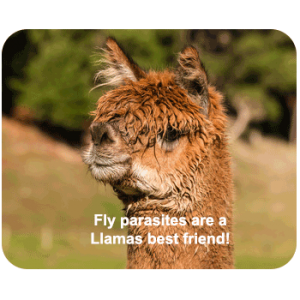Are barn flies and ticks driving you and your livestock insane? Then you need to read this article!
 As summer reaches its peak so do all the annoying, pesky, biting, swarming insects. We watch helplessly as our livestock stomp their feet, swish their tails and rub against anything they can find. 4 times in one summer I had to call the vet because a horse had ripped off an eyelid or nostril from the incessant rubbing. The good news was eyelids reattach quickly and with no scar, the bad news was the $400.00 in vet bills. Add in the gnats and ticks and you have the bane of every horse owner and horse’s existence.
As summer reaches its peak so do all the annoying, pesky, biting, swarming insects. We watch helplessly as our livestock stomp their feet, swish their tails and rub against anything they can find. 4 times in one summer I had to call the vet because a horse had ripped off an eyelid or nostril from the incessant rubbing. The good news was eyelids reattach quickly and with no scar, the bad news was the $400.00 in vet bills. Add in the gnats and ticks and you have the bane of every horse owner and horse’s existence.
And if the annoyance factor isn’t enough, now we have the huge risk of disease. From Lyme’s Disease to West Nile, flies and ticks can spread bad stuff that far outweighs a torn eyelid.
What do most barn owners do? They reach for the fly sprays, ointments like SWAT and fly masks.
Personally, I have found that fly sprays last about 20 seconds, ointments, though they come in fun colors, last a little longer and fly masks and sheets never stay on. So, after an hour of prep by the end of the day my horses were stomping and rubbing and now all tangled in their fly sheets and minus a fly mask.
What do the smart barn owners do? They unleash the fly parasites – beneficial insects into the barn and surrounding areas.
Fly Parasites are gnat size, nocturnal, and do not sting or bite. They spend their entire life cycle on or near manure or decomposing organic material and will not migrate into patios, kitchens or houses. Fly Parasites are just about unnoticeable.
Barn or house flies are not particular about where they live or get their food, but the female fly is careful about where she lays their eggs. Flies look for fresh manure, garbage, or decomposing organic wastes. About 130 eggs are laid in one batch and females may lay up to 21 batches during her short, 30-day lifetime.
2 days or so after the eggs are laid the tiny, white maggots, called Larva, hatch then after 1 or 2 weeks the Larva will twice shed its skin. The new skin hardens into a brown cocoon, called the Pupa.
When the weather is warm this stage lasts 3 to 6 days. Inside the larva is changing into a winged fly.
The female Fly Parasite is also very careful about where she lays her eggs. She seeks out the immature barn fly at the pupa stage, bores thru the cocoon and lays up to 7 eggs of her own that feed off the larva until they hatch 2 to 3 weeks later. Within a few days the Fly Parasites will mate and start the cycle of searching out and destroying another generation of flies!
When trying to control flies it is easier and less expensive to stop the problem before the problem starts.
For best results start using Fly Parasites early in the spring when the weather begins to warm up, upper 60’s or warmer, and then every few weeks throughout the summer fly season until the weather begins to cool off in the fall. Flies reproduce 9 times greater than Fly Parasites – to control flies repetition is the key. For more information watch this video!
Our easy to use recommended usage chart will help you determine how many Fly Parasites you will need. This is not an exact science.
Keep in mind that fly parasites don’t control adult flies. If you have close neighbors that aren’t taking any fly control actions, those neighboring flies can end up on your barn. When we had the horse farm we reached out to our neighbors and told them about fly parasites. It was a win-win situation for everyone and especially our 4 legged friends.
For more helpful article and tips visit www.marchbioligcal.com. We hope you are enjoying a fly free summer!!!
